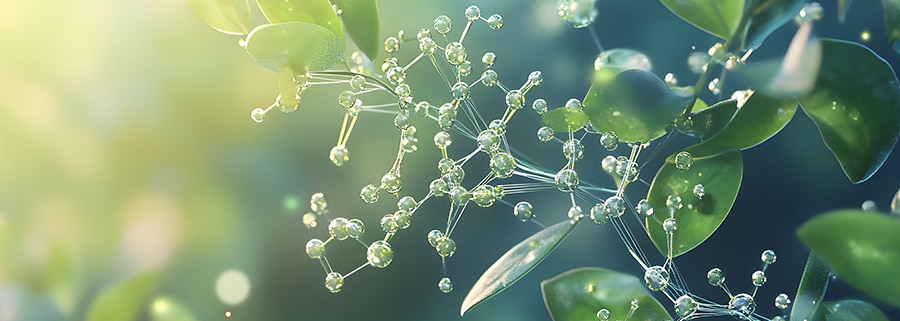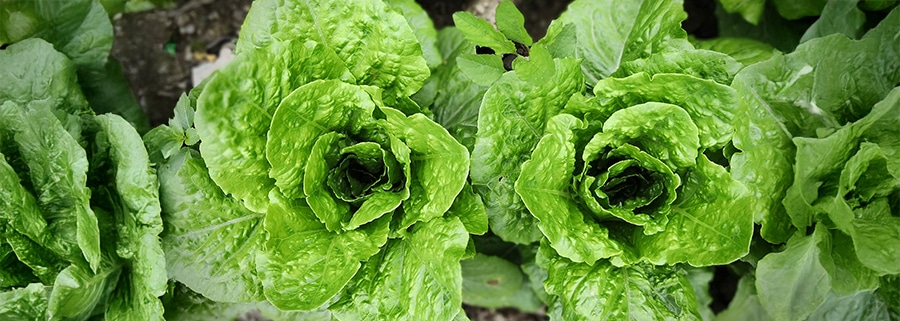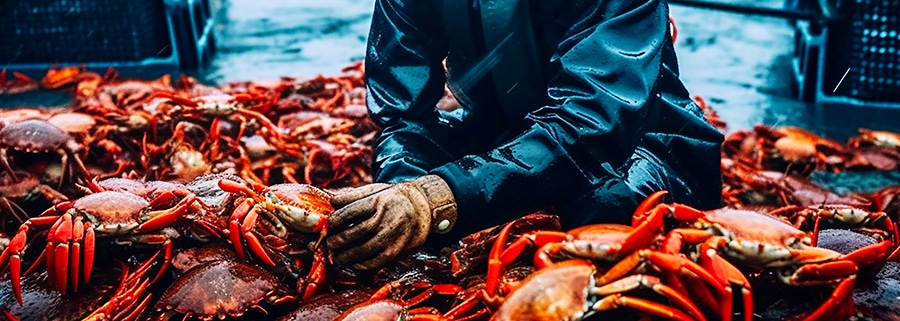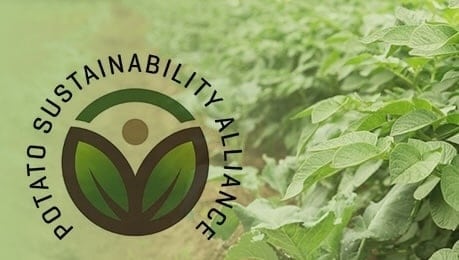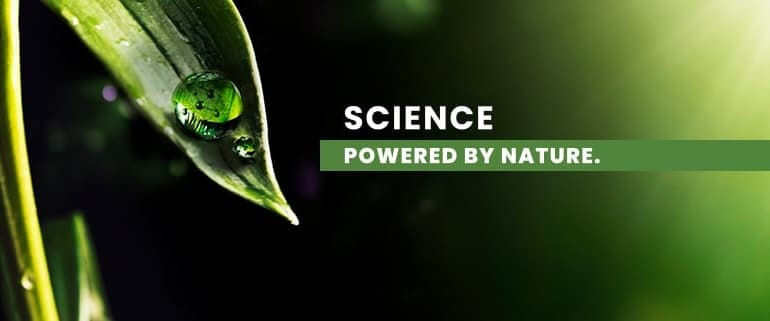Science powered by nature: How chitosan is revolutionizing crop protection
As growers face escalating challenges from pest resistance and a push for environmentally sustainable farming, the need for innovative bio-based solutions has never been greater. Among these innovations, chitosan emerges as a transformative tool in modern agriculture, offering versatile applications that enhance crop health, combat pests, and fortify plants against stress. Chitosan in production agriculture represents a sustainable, powerful, and scientifically backed approach to crop protection and productivity enhancement.
This article explores the science behind chitosan’s benefits for crop production and how it can help growers navigate contemporary challenges.
Farming trends and grower priorities
The agricultural sector is experiencing a paradigm shift as growers and ag retailers grapple with mounting challenges like pest resistance and the need for sustainable practices. Several trends and priorities are reshaping the industry:
- Pest and pathogen resistance management for crops
Overreliance on existing crop protection methods has led to escalating resistance among pests and pathogens, creating an urgent need for multi-modal, bio-based solutions that can effectively mitigate resistance. - Sustainable crop inputs
The rise of biofertilizers underscores a shift towards enhancing natural plant defense mechanisms and overall crop health. Growers are also prioritizing inputs that align with long-term soil health and nutrient optimization, ensuring productivity is sustained for future generations. - Broad-spectrum protection
With crops like soybeans, corn, wheat, and potatoes facing a wide array of threats, growers are seeking versatile solutions that provide protection against pests, diseases, and abiotic stressors while bolstering plant resilience. - Regulatory compliance
A societal push for practices rooted in environmental stewardship is driving the adoption of solutions that align with regulatory standards and food safety goals, guaranteeing production practices remain responsible and forward-thinking. - Customized solution
Advances in technology are enabling site-specific farm management tools that address diverse field conditions and operational needs. Data-driven systems that provide actionable insights and innovative delivery systems are gaining traction for their ability to optimize performance under varying circumstances.
These trends highlight the importance of embracing innovations (like chitosan for crops) that not only address immediate challenges but also position growers for long-term success in a rapidly evolving industry. As growers continue to adopt technologies that prioritize sustainability and regenerative practices, the integration of chitosan as part of a holistic crop input strategy is expected to expand significantly in the coming years.
What is chitosan?
With all these emerging trends and challenges, it’s clear growers need solutions that are innovative to support regenerative practices and deliver on seed, crop, and applicator safety. Enter chitosan, which stands out for its versatility, sustainability, and remarkable applications in agriculture. Its key characteristics include:
- Biodegradability: Environmentally friendly; breaks down naturally without harmful residues
- Biocompatibility: Safe for seeds, crops, and applicators*
- Functional structure: Its amino and hydroxyl groups enable diverse applications, from pathogen suppression to plant growth stimulation
*Safe when used as directed. Chitosan, the active ingredient in Tidal Grow® GENMAX®, was designated Safer Choice by EPA in 2024.
What is chitosan made of?
Chitin, the precursor to chitosan, is a naturally occurring polysaccharide found in the exoskeletons of crustaceans and insects. It’s often upcycled from seafood byproducts. Chitin becomes chitosan when its acetyl groups are removed—a process that alters the chemical structure to be more soluble and reactive. This upcycling process can transform waste into powerful agricultural inputs, such as crop protection products, that directly combat pests and pathogens while fortifying natural plant defense mechanisms.
How to use chitosan in agriculture
Understanding what chitosan is and where it comes from is just the start. The real impact lies in its practical applications. The adoption of chitosan in agriculture helps address critical needs:
- Seed treatments: By coating seeds, chitosan-based seed treatments enhance germination, vigor, and early-stage growth, creating robust foundations for crops
- Foliar sprays: When applied to plant leaves, chitosan protects against foliar pathogens, improves stress resilience, and boosts photosynthesis
- Soil amendments: When integrated into soil, chitosan enhances microbial biodiversity, improves nutrient cycling, and promotes healthier root systems
In addition to these applications, chitosan disrupts fungal growth by interacting with fungal cell walls and membranes. It also exhibits antibacterial activity by causing membrane disruption, effectively reducing the impact of harmful bacteria on crops.
Biostimulant and biopesticide roles of chitosan
Chitosan’s versatility shines in its ability to protect plants on a microscopic level. Its dual role as a biostimulant and biopesticide makes it a standout in sustainable agriculture, proving that innovation and efficiency can go hand in hand.
Here’s how it works:
1. Biostimulant
- Enhances physiological processes, promoting growth and development
- Triggers the production of secondary metabolites such as flavonoids and phytoalexins, which fortify plants against stressors
- Improves nutrient uptake by stimulating root growth and increasing soil microorganism activity, fostering a healthier growing environment
2. Biopesticide
- Suppresses a wide range of pathogens, including fungi, bacteria, and nematodes
- Elicits plant immune responses, enabling crops to resist infections naturally
- Targets pests with minimal environmental impact, ensuring safety for beneficial organisms such as pollinators and soil microbes
In short, chitosan helps crops grow stronger and be more productive (biostimulant) and naturally protects them from pests and diseases (biopesticide).
But not all chitosan is created equal
Like any great tool, its effectiveness depends on how it’s made and what it’s made from. So, what sets the best chitosan-based solutions apart?
Raw material quality
Sourcing high-quality chitin from sustainable, domestically sourced seafood industries ensures superior results. Inferior raw materials may lack the structural integrity or consistent quality needed for effective agricultural applications.
Manufacturing process
Eco-friendly and precision-driven manufacturing processes enhance product effectiveness and reduce environmental impact. Processes that prioritize waste reduction and maximize energy efficiency further enhance sustainability and the motivation to adopt chitosan in a crop input strategy.
Bioengineering techniques
Tailoring molecular size and structure to target specific agricultural outcomes maximizes efficacy. Some fungi and bacteria are only susceptible to smaller chitosan, while others can be controlled effectively using larger chitosan. Lower molecular weight chitosan can work its way inside fungal and bacterial cells in some cases, resulting in disruptions to internal processes.
Formulation precision
Optimal combinations of engineered chitosan molecules deliver measurable improvements in pest control, growth stimulation, and stress mitigation. Precision formulation ensures that chitosan solutions meet the unique needs of each crop and growing condition.
However, some chitosan agriculture products may not be formulated precisely. These products can unintentionally backfire, increasing pest and pathogen pressure instead of solving the problem. That’s why choosing trusted suppliers with a proven track record matters.
Overcoming the unique challenges of crop pests and pathogens
Selecting the right chitosan-based products is just the first step to addressing the persistent pressures that amplify production costs and strain management strategies. These pressures, driven by evolving pests and pathogens, demand innovative solutions.
Increased pest and pathogen resistance
Resistance to traditional solutions is on the rise, necessitating alternatives with inventive modes of action. Chitosan directly combats pests and pathogens such as tar spot, SCN and SDS, and white mold. This dual-action approach offers growers new active ingredients and modes of action while mitigating the risk of further resistance development.
Multi-tiered strategies
Current approaches stack genetic traits and chemical inputs, yet these are insufficient to combat evolving threats. Chitosan-based formulations add a new layer of protection by fortifying the plant’s natural defenses. By triggering immune responses at a cellular level, chitosan creates plants that are better equipped to withstand biotic and abiotic stressors.
Emerging technologies
Advanced biopolymers like chitosan not only bring new modes of action but also optimize the delivery of existing active ingredients. This dual capability reduces waste, maximizes efficacy, and extends the lifespan of crop protection tools. By integrating chitosan agriculture products into existing management programs, growers can enhance the longevity and performance of their pest control strategies.
Proactive meets reactive
Growers integrating chitosan-based products into their practices benefit from its ability to provide both proactive and reactive solutions. Its versatility ensures it addresses multiple layers of pest and pathogen challenges while delivering sustainable outcomes. For example, field trials have demonstrated significant yield improvements when chitosan is used to manage soil-borne diseases in high-value crops.
Research-backed efficacy
When it comes to making informed decisions, nothing speaks louder than proven results.
Disease suppression
Research highlights chitosan’s ability to inhibit fungal and bacterial pathogens, reducing the incidence of diseases such as powdery mildew, blight, and rust. In trials, crops treated with chitosan consistently exhibited lower disease severity compared to untreated controls.
Enhanced growth
Field experiments demonstrate that chitosan agriculture products promote root elongation, chlorophyll production, and overall plant vigor. Crops treated with chitosan have shown increases in biomass and marketable yield.
Improved soil health
By fostering beneficial microbe populations, chitosan contributes to nutrient cycling and soil structure improvements. These effects are particularly valuable in degraded or nutrient-poor soils, where chitosan can accelerate recovery and productivity.
Selecting and integrating biostimulants and biopesticides
As growers embrace chitosan-based solutions, the next step requires careful evaluation of factors that influence its performance and compatibility with existing operations. By addressing these considerations, growers can ensure that chitosan-based products meet immediate needs while further aligning with long-term sustainability and productivity goals.
Step 1: Assess composition
Evaluate whether the product contains properly formulated chitosan designed to:
- Target your crop’s specific pest control challenges, or
- Enhance resilience to physiological/environmental stressors
Step 2: Confirm compatibility
Growers should confirm that chitosan-based products are compatible with current fertilizers, pest management programs, and other inputs. Proper compatibility ensures no unintended interactions, allowing for smooth and successful incorporation into existing strategies. Always perform a jar test before tank mixing.
Step 3: Explore synergistic potential
Chitosan’s true power emerges when used alongside other leading agricultural technologies. Its ability to enhance plant immunity, suppress pathogens, and promote nutrient uptake makes it an ideal candidate for stacking with complementary solutions. Stacking leads to synergistic effects and the enhanced efficacy of multiple modes of action.
Best practices to optimize chitosan’s use in agriculture
Beyond integration, strategic application also helps chitosan deliver its full potential.
Tailored applications
Customize application methods and rates based on crop type, growth stage, and specific challenges. For example, applying chitosan as a seed treatment can jumpstart germination and early growth, while foliar sprays are ideal for mid-season pathogen control.
Integrated pest management (IPM)
Incorporate chitosan into broader pest management strategies to enhance efficacy and reduce reliance on chemical inputs. This holistic approach maximizes chitosan benefits for plants while preserving the effectiveness of other tools.
Continuous monitoring
Use precision agriculture technologies to track crop responses and adjust applications in real-time. Monitoring tools can identify optimal application windows and detect early signs of stress or pest activity.
By adopting strategies like these, growers can achieve significant improvements in crop health, yield, and sustainability. The versatility of chitosan ensures it can be seamlessly applied to diverse farming systems, from conventional to organic operations.
Expanding the horizons of chitosan for plants
The potential applications of chitosan extend far beyond its current uses. Ongoing research is exploring its role in addressing emerging challenges such as climate resilience, carbon sequestration, and water-use efficiency. Preliminary studies suggest that chitosan may enhance drought tolerance by improving water retention in soil and reducing transpiration rates in plants.
As the agricultural industry evolves, chitosan is expected to play a pivotal role in the transition toward regenerative farming practices. By supporting ecosystem health and reducing dependence on synthetic inputs, chitosan-based agriculture products offer a pathway to more sustainable and resilient food systems. Its compatibility with existing precision agriculture technologies further enhances chitosan’s appeal, enabling growers to achieve targeted results with minimal waste.
Key takeaways: chitosan benefits for plants
Chitosan’s impact on agriculture is multifaceted, as it addresses key challenges and paves the way for sustainable and innovative practices. Here are takeaways that highlight its significance in agriculture:
- Versatility: Functions as a biostimulant and biopesticide, offering broad-spectrum protection and growth enhancement
- Sustainability: Biodegradable and eco-friendly, contributing to long-term soil and ecosystem health
- Proven efficacy: Backed by robust scientific research and field trials, demonstrating tangible benefits across crops and conditions
- Customization: Tailored formulations and application methods ensure optimal performance for various farming needs
- Future potential: Positioned to address emerging challenges in agriculture, from climate resilience to regenerative practices
Start applying chitosan agriculture products
Tidal Grow AgriScience empowers growers with innovative, sustainable solutions that protect crops, enhance yields, and promote long-term soil health for future generations. Our chitosan-based technologies are designed to meet the challenges of today’s growers while paving the way for a more resilient and sustainable tomorrow.
Contact a Tidal Grow AgriScience representative today to learn how our advanced solutions can transform your growing practices and ensure success for years to come.
Citations
Chakraborty, Moutoshi, et al. Mechanism of Plant Growth Promotion and Disease Suppression by Chitosan Biopolymer. Agriculture, vol. 10, no. 12, 2020, p. 624,
https://doi.org/10.3390/agriculture10120624
Lopez-Moya, Federico, et al. Molecular Mechanisms of Chitosan Interactions with Fungi and Plants. International Journal of Molecular Sciences, vol. 20, no. 2, 2019, p. 332,
https://doi.org/10.3390/ijms20020332
Raafat, Dina, et al. Insights into the Mode of Action of Chitosan as an Antibacterial Compound. Applied and Environmental Microbiology, vol. 74, no. 12, 2008, pp. 3764–3773,
https://doi.org/10.1128/AEM.00453-08
Rkhaila, Amine, et al. Chemical Proprieties of Biopolymers (Chitin/Chitosan) and Their Synergic Effects with Endophytic Bacillus Species: Unlimited Applications in Agriculture. Molecules, vol. 26, no. 4, 2021, p. 1117,
https://doi.org/10.3390/molecules26041117
Shinde, N. A., Kawar, P. G., & Dalvi, S. G. (2024). Chitosan-based nanoconjugates: A promising solution for enhancing crops’ drought-stress resilience and sustainable yield in the face of climate change. Plant Nano Biology, 7, 100059.
https://doi.org/10.1016/j.plana.2024.100059
